
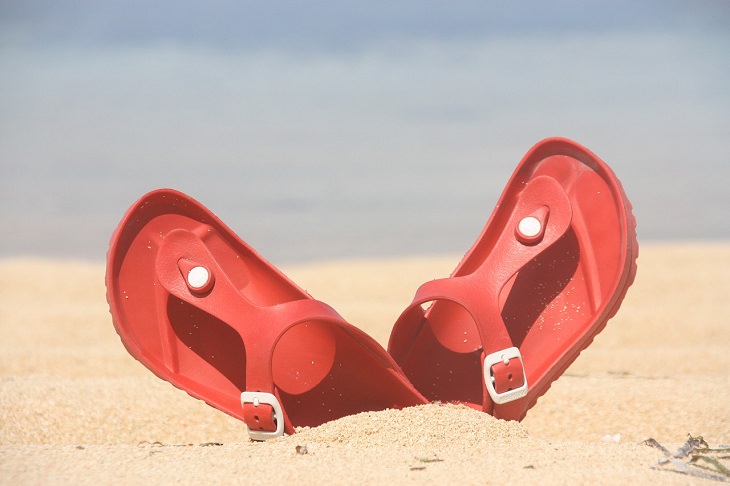
To get the most out of your flip flops, follow these tips:
1. Don’t wear them for more than 3 hours daily.
2. When you do wear flip flops, don't miss the tops of the feet when applying sunscreen, as this area is prone to burning.
3. Take breaks when you have to walk for more than 30 minutes in flip flops.
4. Only wear flip flops when they are necessary, e.g. at the beach or at the swimming pool.
5. Opt for more closely-fitted flip flops that adhere better to the foot, as these will not hit your heels so much and will be more comfortable. If you can find one, get a pair with arch support.
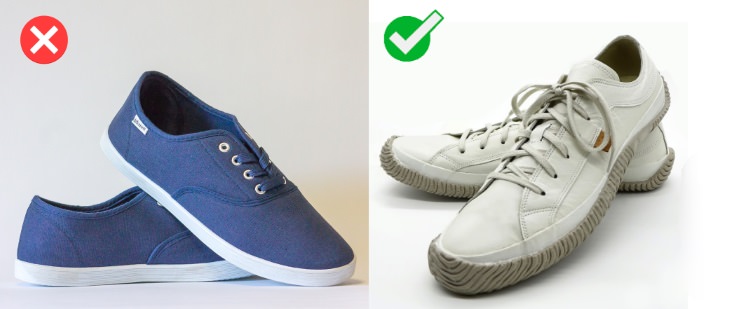
All of these flat shoes are quite popular in the summertime, as they are breathable, offer more protection and yet easy to keep on, unlike flip flops. However, even these shoes can be harmful to your posture and health, here’s how:
To find a good pair of summer flats, make sure they’re breathable and made of high quality materials. If your shoes don’t have orthopedic arches, you can purchase special insertable insoles that will prevent your feet from hurting.
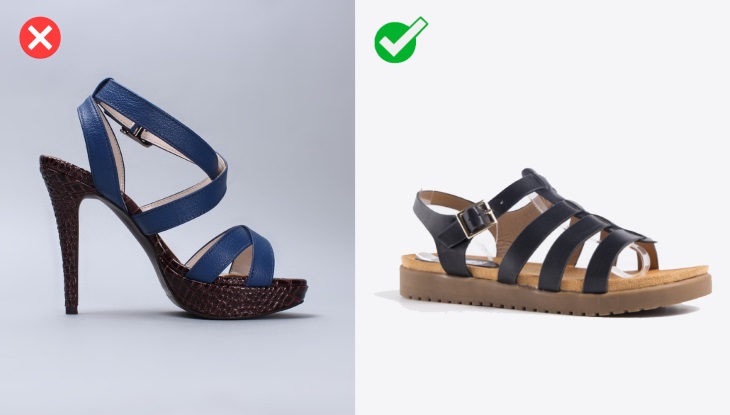
If you’re looking for a pair of open footwear that will be both extremely breathable, fitted, and provide support to the feet, sandals are your best bet. And while they still are not suited for hiking trips, as they don’t offer enough protection for the feet, they are a great choice for long city walks and other outdoor activities. Furthermore, they are often made of natural materials that don’t make your feet sweaty. Here is what you should be aware of when wearing sandals:
1. Sandals can be very different. The soles of some sandals are too flat and thin, which creates the same kind of repercussions as any other flat footwear: painful, tired feet and bad posture. That’s why it is recommended to choose a pair with a thicker sole and supported arch.
2. Choose a pair that will be adjustable to make sure they adhere to the feet, otherwise they’re no better than flip flops.
3. Opt for natural materials that breathe and prevent your feet from sweating.
4. When choosing a heeled sandal, don’t go higher than 2 inches (5 cm) and look for a chunky heel or platform.
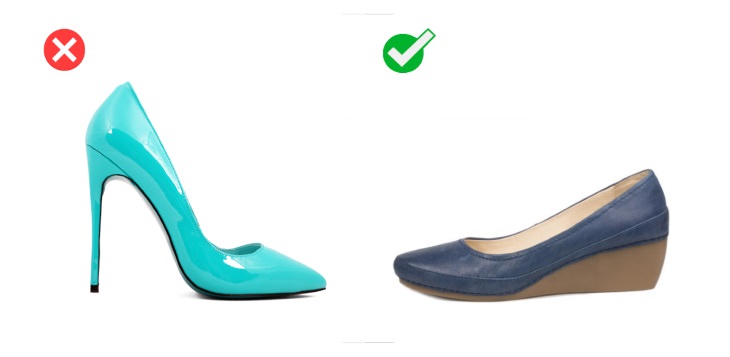
Still, a beautiful high-heeled shoe can accentuate your posture and be the only complementary choice to a dress on a night out. Here are some tips on how to choose and wear high-heeled shoes:
1. Don’t get shoes with a heel higher than 2 inches.
2. Opt for a chunky heel or platform and not a stiletto, which will provide more support.
3. Don’t buy a pair of heels that isn’t comfortable or stable, no matter how gorgeous they might look. Uncomfortable heels are more likely to cause toe injuries and sprained ankles.
4. Wear your high-heeled shoes in before wearing them out. Although this is true about most shoes, heels can be particularly ruthless in causing blisters, so make sure to wear them around the house before wearing them outdoors.
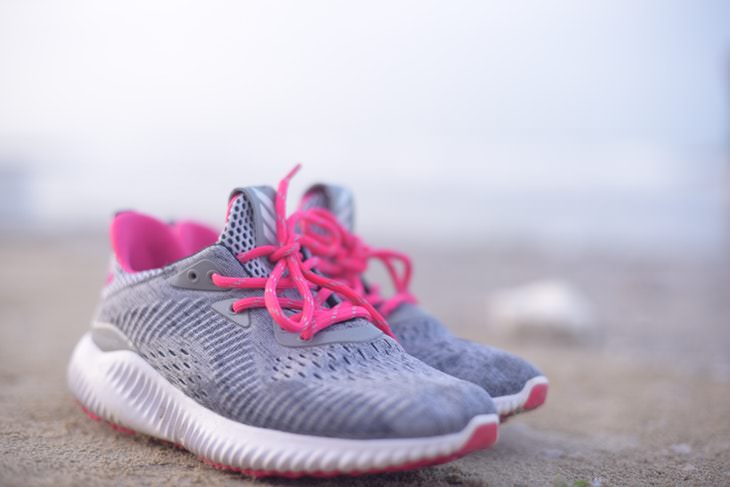
The last item on our list is probably the ultimate footwear. It’s breathable, lightweight, provides ample protection, supports the arches of the feet, and can be easily adjusted. It is suitable to most types of activities and doesn’t exert the feet. But even these, seemingly-perfect shoes can potentially be harmful to your feet.
1. For one, bad quality sneakers are often not breathable enough and can exacerbate athletes foot and bacterial infections, so choose a pair that is breathable.
2. Even the best quality sneakers can make your feet sweaty, so make sure to wear a different pair every day to let them vent.
3. Rocker bottom sneakers are a popular trend and they can help strengthen the muscles in your feet, but they are not advised for seniors, as they can affect muscle strength or balance.
4. Don’t choose a shoe that is too tight-fitting or loose around the toe box, as this, too, can affect the distribution of weight throughout the feet. A very tight shoebox, for example, may even cause numbness and pain in the toes, so it is important to wear a pair of sneakers or tennis shoes that will fit your size and foot shape.